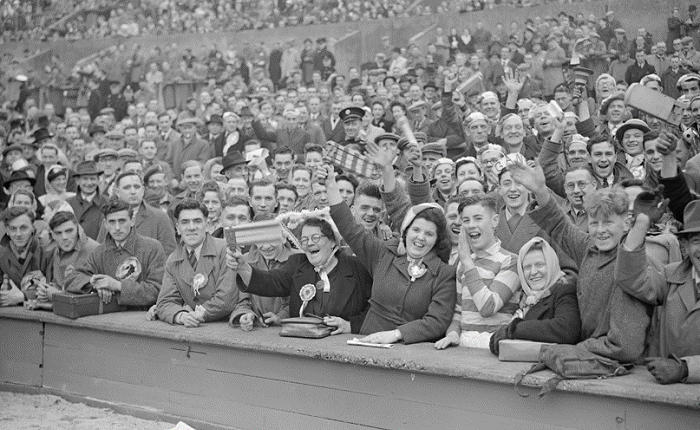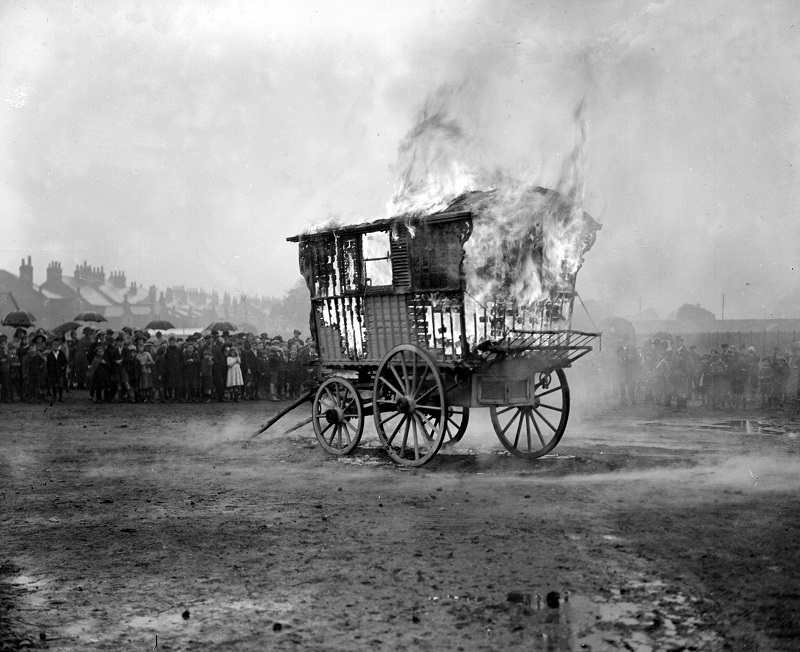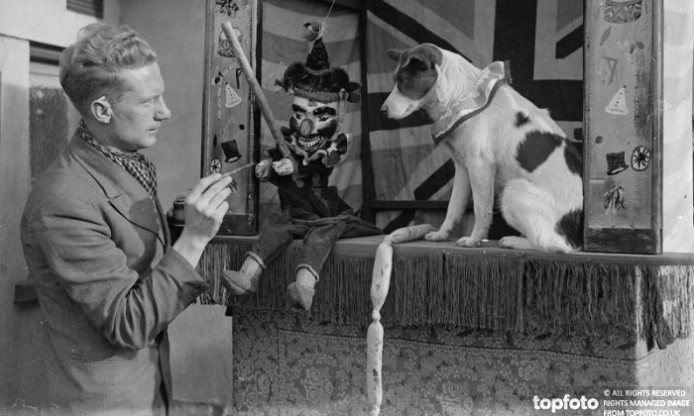img: Mr Williams J Maggs, the 26 year old son of Mr J Maggs, the ‘ Punch and Judy ‘ showmen of Bournemouth for the past 40 years, is maintaining hundreds of years of family tradition. He will use the 200 year old ‘ Punch ‘ as did his grandfather and great grandfather before him. 13th November 1935 © topfoto.co.uk
The content selected by WEAVE content providers for publication in Europeana Collections portal showcases the richness and variety of digital representation of tangible and intangible heritage. Content partner TopFoto explored a number of different areas. The editing process was lengthy due to the complexity of defining intangible heritage through the medium of photography. Dance, particularly related to folk, was a focus area suggested by project partner Coventry University (Centre of Dance Research). Other subjects researched and submitted in the WEAVE collection included: Ceremonies and Customs, Parades and Fetes, Religion, Communities such as the Costers – Pearlies, Mining Communities, Crafts and occupations that are no longer practiced. Markets and market sellers, street performers and musicians, and a special look into sports fans, and specifically football fans, completed the general selection.

Although the TopFoto photographic archives are from UK based agencies and photographers, there is a reasonable representation throughout Europe and the rest of the world. The images are almost exclusively from the 20th Century with the majority taken in the 1950s and 60s, and for this reason, copyright on these collections applies: but the WEAVE selection is published in Europeana with license for educational reuse.
In addition to these materials, TopFoto selected for publication in Europeana a photographic collection (401 records) about Roma heritage and community, which was the focus of a participatory research and metadata co-curation prior to Europeana publication. In fact, this selection offered an occasion to reflect about possible contested heritage or heritage that depicts minority/marginalized communities. Especially in the case of very old collections, it is very likely that the original descriptions of the items, or that the items themselves (e.g. heritage colonial videos or photographs), include inappropriate terminology and offensive language towards the community that they intend to represent. To provide a participatory approach in solving this problem, WEAVE experimented with an exercise of co-curation jointly conducted by partners TopFoto and ERIAC: media experts in Roma heritage from ERIAC’s network were invited to review the collection about Roma heritage that TopFoto intended to provide for publication in Europeana. This effort was delivered within the scope of WEAVE’s capacity building work and quality improvement of heritage collections by building more representative content and metadata. The analysis of TopFoto’s collection by experts’ consultation investigated potential problematic issues with current Roma heritage collections and tried to find potential solutions to these.



